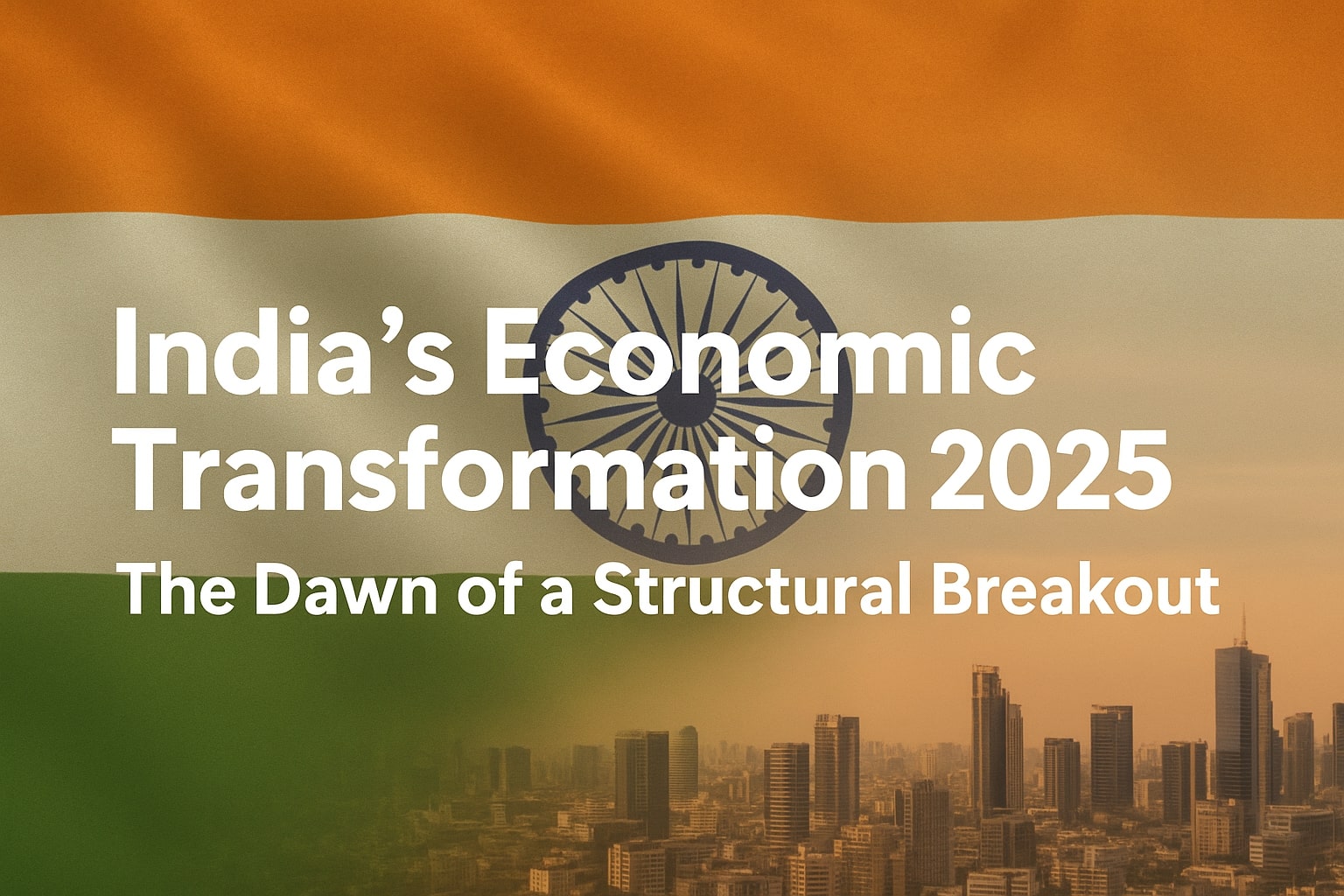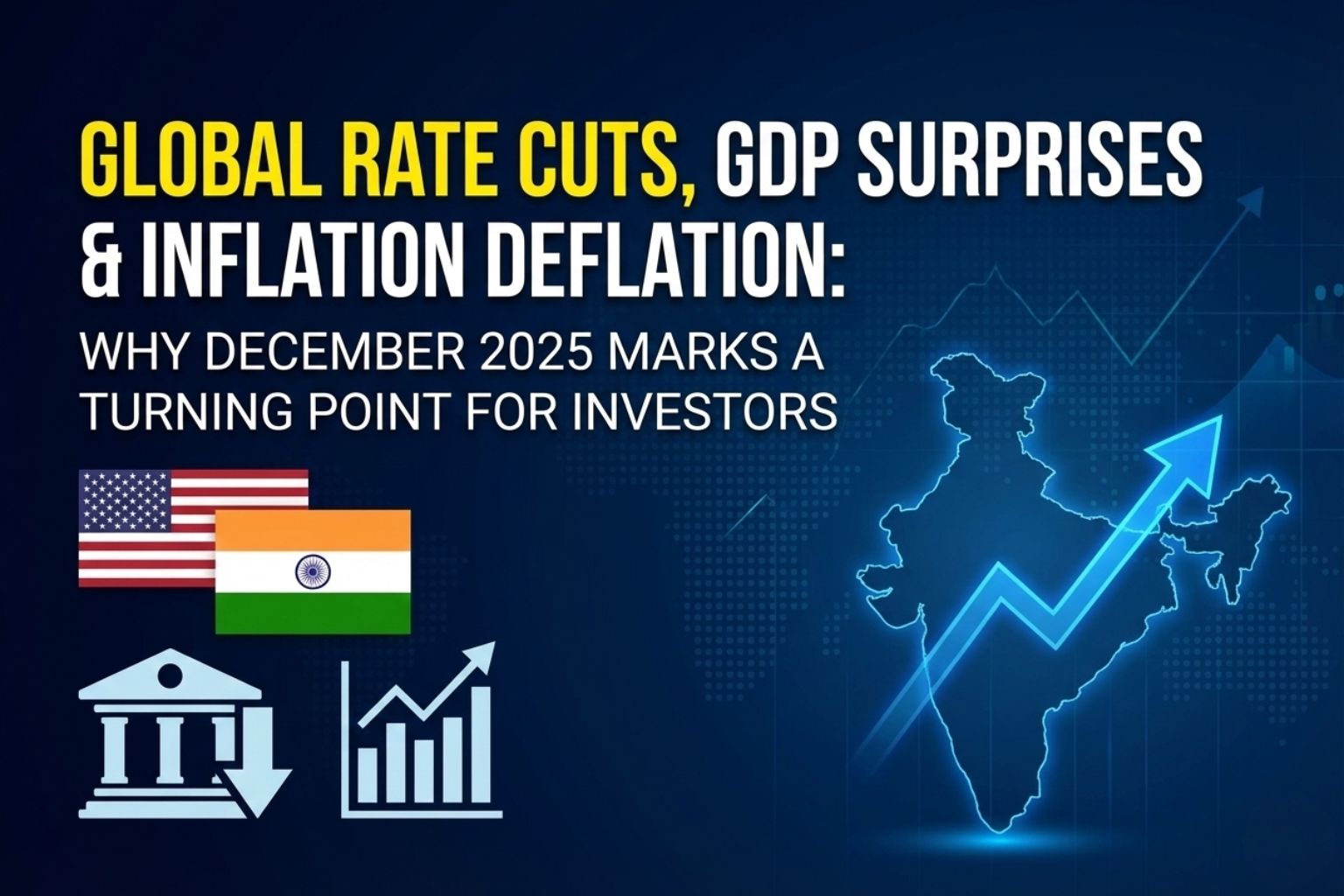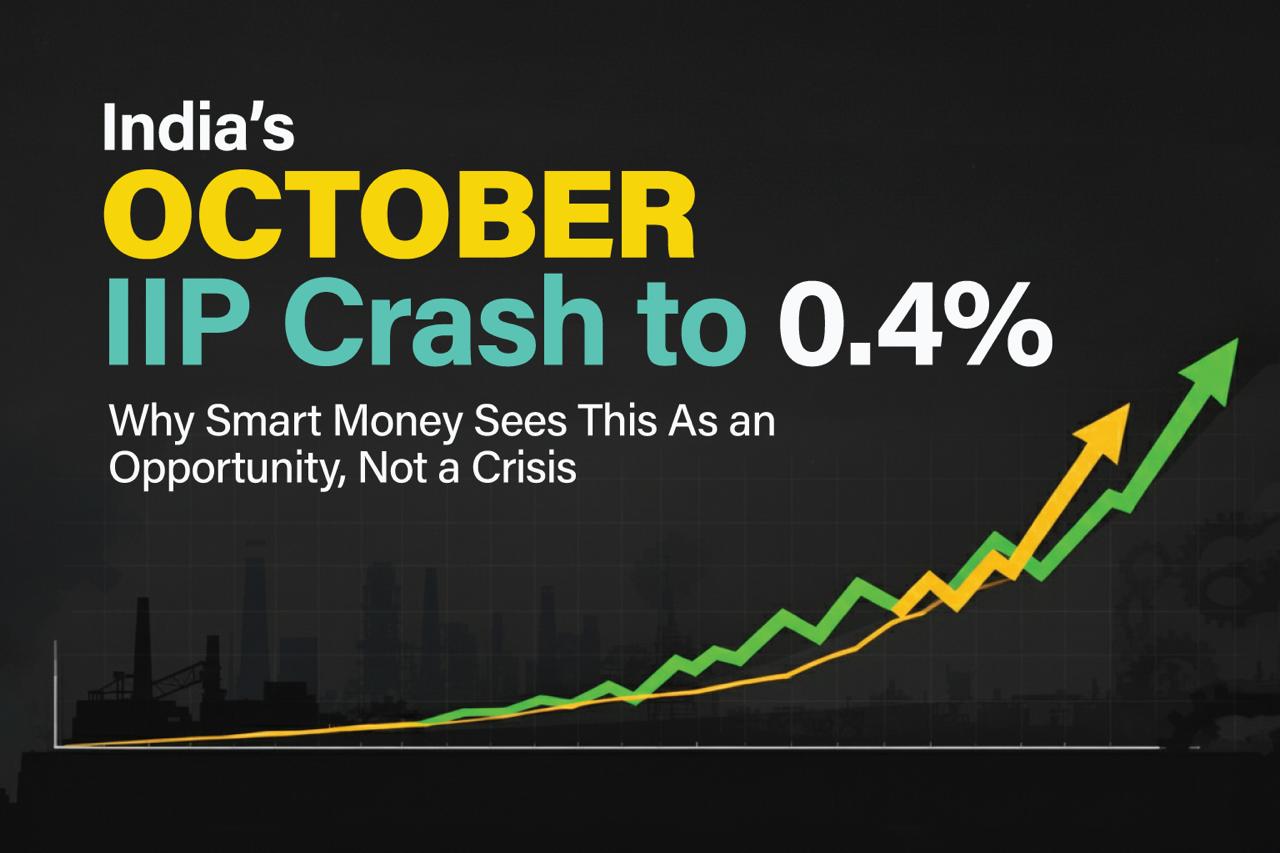
Is India going through an Economic Transformation in 2025?
Yes, India’s Economic Transformation 2025 marks a new era for the nation as structural reforms, digital innovations, manufacturing investment, and global partnerships converge to create a multi-sectoral growth story. With GDP growth at 7.8%, digital payments dominating the world stage, record renewable energy additions, and global supply chains shifting toward India, the country’s economic narrative has evolved from potential to performance. From the internationalization of the rupee to semiconductor manufacturing and startup ecosystem growth, India is not only rising—it’s transforming.
India’s Economic Transformation 2025: The Dawn of a Structural Breakout
India’s journey through 2025 has become the most compelling economic story of the decade. Analysts, investors, and policymakers around the world are watching as the country transitions from an emerging market into a transformative economic powerhouse. Underpinning this new reality are decisive policy reforms, global realignment, and a wave of innovation redefining the country’s long-term growth trajectory.
The Structural Takeoff
In FY 2024-25, India’s economy demonstrates remarkable balance: Services make up 54% of GDP, Industry 28%, and Agriculture 18%—a composition signaling the nation’s multi-sector progress. Growth reached 7.8% in Q2 2025, outpacing every major economy in the world. The International Monetary Fund (IMF) and World Bank both reaffirm India’s position as the world’s fastest-growing large economy.
Several transformative drivers explain this momentum:
- Financial reform through rupee internationalization and rating upgrades.
- Digital export via the UPI global revolution.
- Manufacturing expansion through the Production Linked Incentive (PLI) schemes.
- Renewable energy growth, making India a clean energy leader.
- Structural discipline manifested by low inflation and fiscal stability.
These intertwined dimensions shape what experts increasingly call India’s structural breakout —a multi-dimensional transformation encompassing finance, infrastructure, technology, and governance.
The Financial Frontier: The Rise of the Rupee
In mid-2025, the Reserve Bank of India (RBI) took landmark steps to elevate the rupee on the global stage. The introduction of rupee-denominated bonds for foreign investors and the establishment of Special Rupee Vostro Accounts (SRVAs) have enabled neighboring countries to settle trade in Indian currency. This strategy aims to insulate India from external shocks while promoting its currency as a regional anchor.
The world took notice when S&P Global Ratings upgraded India’s sovereign rating to BBB+ (stable) in September 2025—the first in 18 years—reflecting robust fiscal policy, consistent growth, and inflation at an eight-year low of 1.54%. With a policy rate of 5.5% and a current account deficit below 1% of GDP, India’s macroeconomic foundation is stronger than ever.
UPI and the Digital Payment Revolution
India’s UPI (Unified Payments Interface) is now a global brand. Once a local innovation, UPI has transformed into an international fintech standard through partnerships led by NPCI International (NIPL). The October 2025 collaboration between NIPL and Japan’s NTT Data Corporation marked a historic milestone—UPI integration into one of Asia’s most developed payment systems.
Key performance highlights reveal UPI’s dominance:
- 18.39 billion transactions processed in June 2025.
- Cross-border UPI transactions grew 20× year-over-year.
- India executes 85% of the world’s digital payment volume via UPI.
Recent expansions to Qatar, France, UAE, and Singapore demonstrate how India has become a digital infrastructure exporter—a term economists use to describe nations exporting entire digital ecosystems. For India, this shift translates to fintech leadership and geopolitical soft power.
Manufacturing Renaissance: The China+1 Dividend
India’s manufacturing landscape is undergoing structural renewal driven by the China+1 supply chain reconfiguration. Tariffs imposed by the U.S. on China exceeding 130% have compelled corporations globally to establish production bases outside China. India, with its PLI schemes spanning 14 sectors, has seized this opportunity.
Electronics: The Apple Case Study
Apple’s expansion into India tells the manufacturing success story vividly:
- $10 billion worth of iPhone exports between April–September 2025.
- $22 billion iPhone production in FY 2025.
- 80% of production designated for export.
For the first time, all iPhone 17 models were produced in India at launch, signaling parity with China. The move has created a new ecosystem of component suppliers, logistics providers, and skilled workers—boosting India’s industrial capabilities.
Electronics: The Apple Case Study
Apple’s expansion into India tells the manufacturing success story vividly:
- $10 billion worth of iPhone exports between April–September 2025.
- $22 billion iPhone production in FY 2025.
- 80% of production designated for export.
For the first time, all iPhone 17 models were produced in India at launch, signaling parity with China. The move has created a new ecosystem of component suppliers, logistics providers, and skilled workers—boosting India’s industrial capabilities.
Semiconductor Self-Reliance
By the end of 2025, India is poised to enter the semiconductor manufacturing club. The Micron Technology ATMP facility in Gujarat will produce chips valued at over $2.75 billion, while Tata Electronics and CG Power are establishing full-stack chip fabrication and packaging plants. By FY 2030, India’s semiconductor market is projected to rise from $38 billion (2023) to $100+ billion.
Shipbuilding and Maritime Growth
In September 2025, the government sanctioned an ₹69,725 crore (US$8.4 billion) maritime modernization package aimed at propelling India among global shipbuilding leaders. This complements the “Blue Economy Vision 2047,” integrating naval innovation, port infrastructure, and exports.
Clean Energy: Powering the Future
India’s transition toward green energy has gained extraordinary momentum. The country added 34.4 GW of solar and wind capacity in the first nine months of 2025—a 71% jump from 2024. With cumulative renewable capacity now exceeding 247 GW, India ranks third globally behind China and the U.S.
Solar accounts for 52% and wind 21% of installed renewable capacity. Rooftop solar installations soared 81%, reflecting growing household adoption and availability of concessional financing. By 2030, India targets 500 GW of non-fossil capacity, a goal experts consider achievable given current pace and technological collaboration with the EU, Japan, and the UAE.
Macro Stability and Growth Discipline
Inflation and Fiscal Health
At 1.54%, India’s inflation in September 2025 marked the lowest in eight years. This economic stability allowed the RBI to recalibrate policy and fuel credit expansion. The combination of moderate interest rates, disciplined fiscal spending, and strong consumption helped India beat global growth headwinds.
Current Account Performance
India posted a $13.5 billion current account surplus in late FY2024-25, transforming previous deficits into stability. A resilient services surplus ($53.3 billion) and high remittances ($31.5 billion)** underscore enduring global confidence in India’s talent economy.
GDP and Investment
Real GDP grew 7.8% in Q2 and 6.5% for FY2024-25 overall. With capex allocation exceeding ₹11.21 lakh crore ($135 billion), India’s infrastructure-led growth model promises continued momentum.
Industrial Transformation in Motion
Auto Components and Electronics Manufacturing
India’s auto components exports are projected to reach $100 billion by 2030, more than triple current levels. With global automakers sourcing from Indian suppliers, the country is reshaping supply chains for electric vehicles (EVs), software-defined components, and high-precision engineering.
In electronics, India displaced China as the largest smartphone exporter to the U.S. (44% market share) in Q2 2025. This milestone reflects how policy, skill development, and ecosystem coordination are redefining India’s role in global manufacturing.
Textile Leadership
Textiles have reemerged as a high-potential export engine. Between April and September 2025, India’s textile exports reached $17 billion, buoyed by diversification away from China and strong PLI incentives targeting technical and sustainable fabrics.
Digital & Startup Economy Boom
India’s startup ecosystem now ranks third globally, with 73 unicorns valued at $367 billion. Bengaluru remains the innovation capital, while Delhi-NCR and Mumbai follow close behind.
Key highlights:
- 11 unicorns added in 2025, including Ai.tech and Rapido.
- Fintech dominates with 19 unicorns worth $50 billion.
- 4.15 lakh startups registered, employing over 17.2 lakh people.
Educational powerhouses like IIT Delhi and IIM Ahmedabad act as startup incubators. As fintech and deep-tech startups scale globally, India’s innovation ecosystem cements its role as a growth catalyst.
Structural Policy Reform: GST 2.0
A new framework called GST 2.0 is being developed to simplify India’s complex multi-tier tax structure. The move aims to reduce five tax slabs to two, widening the tax base and improving compliance efficiency. By integrating petroleum, power, and real estate into the GST basket, reforms will unify India’s domestic market further while attracting foreign investors seeking predictability.
Humans of India’s Financial Boom
India’s household savings story has transformed. There are now 194 million demat accounts, up from under 50 million a decade ago. Retail participation in equity and mutual funds has made Indian markets resilient even during global selloffs. In October 2025, foreign institutional investors re-entered Indian equities, injecting over ₹3,000 crore after months of outflows.
This financial deepening, aided by fintech democratization, represents the rise of the Indian retail investor—a crucial part of the 2025 transformation narrative.
Challenges Amid the Breakout
Even as growth surges, India faces real challenges:
- Maintaining consistent policy execution across states.
- Addressing quality and productivity differences in manufacturing.
- Ensuring inclusive growth across all strata.
- Preparing for climate impacts on agriculture and cities.
Yet unlike previous growth spurts, today’s expansion rests on structural reforms, not transient consumption. That distinction is what gives 2025 its historical weight.
The Road Ahead: Toward 2030
India’s economic story will likely unfold in three interlinked dimensions over the next decade:
- Deep industrialization: Expanding electronics, automotive, and semiconductor ecosystems.
- Digital globalization: Exporting platforms like UPI, Aadhaar, and fintech standards globally.
- Green transition: Building 500 GW renewable capacity and low-carbon manufacturing supply chains.
If these trends persist, India is projected to reach a $10 trillion GDP economy by early 2040.
Below are few more questions which might be tickling in your mind right now.
Because 2025 marks convergence across fiscal, digital, manufacturing, and energy reforms that strengthened India’s economy structurally—beyond cyclical recovery patterns.
It’s RBI’s effort to allow foreign trade settlements and investments in Indian currency, reducing dollar dependency and promoting rupee as a global trade medium.
India reached approximately 247 GW installed renewable capacity by September 2025, the third largest after China and the U.S.
Electronics and auto components top the charts, supported by robust growth in textiles and pharmaceuticals.
Q7 Trading Solutions provides market intelligence and financial strategy services, tracking macroeconomic trends, sector growth, and trading insights for institutional and retail clients.
About Q7 Trading Solutions
At Q7 Trading Solutions, our mission is to empower businesses, investors, and policymakers with clear, research-driven insights into India’s evolving economic landscape. As the country undergoes historic transformation, Q7 Trading Solutions delivers analytics, forecasts, and investment intelligence that help clients navigate emerging opportunities with precision.
Do you want to dive deeper? Download our comprehensive report on it.



